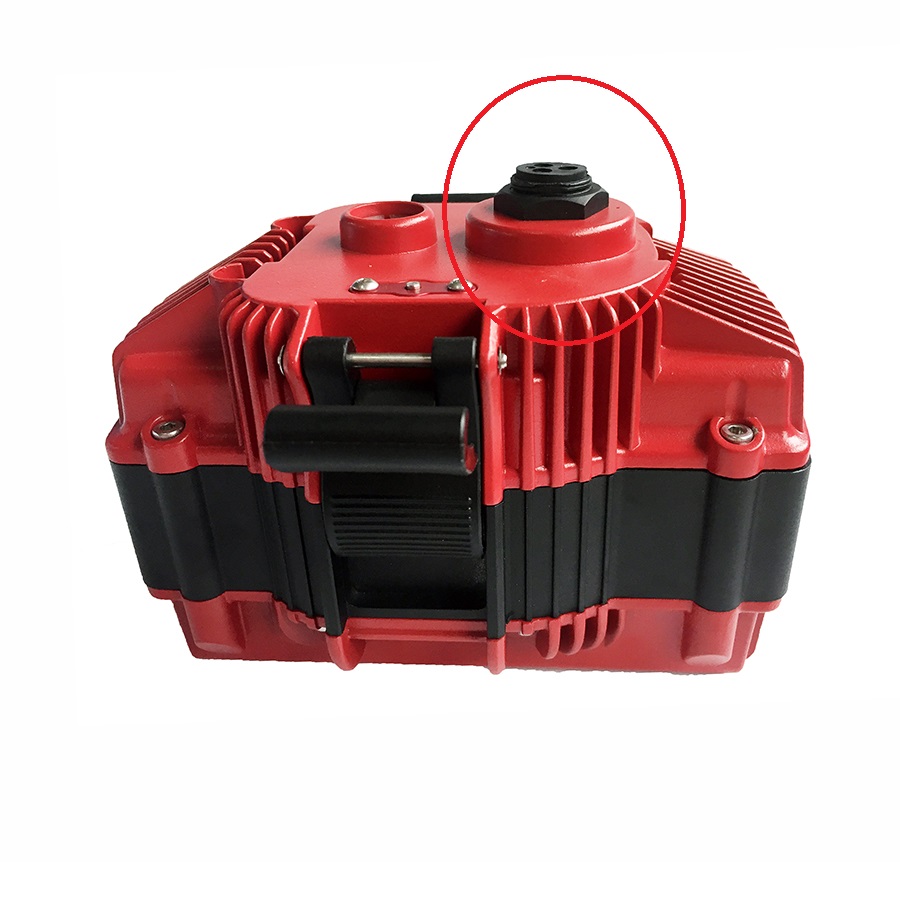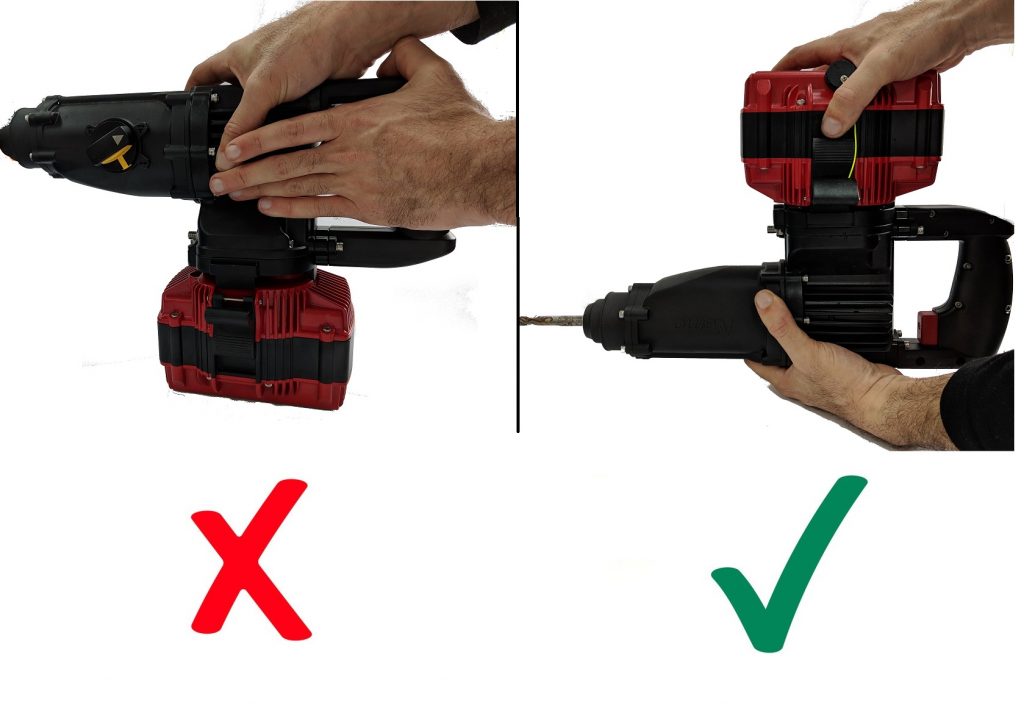Dear divers.
Our team has recently been informed of a safety incident involving a 22V Li-ion 6Ah battery. (This type of battery is used with the SDS rotary hammer and V2 Nemo Grinder, and is designed to be replaceable
While no injuries or severe damage are reported, we take any such incident very seriously and investigate any potential problems in order to constantly improve and ensure the quality of our tools.
We would like to take this opportunity to refresh and reiterate our safety instructions for handling Nemo Lithium batteries:
Battery Safety
Lithium batteries are known to have the potential to catch fire while charging. This is a
- Our tools use high capacity batteries and are designed to be used by professionals in extreme marine environments.
- Our batteries are sealed and enclosed in a heat dissipating
aluminum container. - Nemo tools are used in a wide variety of working temperatures and workloads.
While The rate of failure is low among many thousands of Nemo tools dispatched around the world. However, any failure still represents a higher than usual risk compared to other industries and use-cases, and this calls for extra care and professional adherence to safety guidelines.
A. Charging safety:
- Charge the batteries in a safe area, away from people, any flammable materials or anything that could potentially catch on fire.
- Never charge a battery which is suspected to be faulty or flooded.
- Dispose of old or failed batteries safely.

B. Know your battery and handle with care:
- Handle the battery with care while attaching and detaching from the tool. It’s preferable to turn the tool upside down and carefully press the battery onto the tool as opposed to placing the battery on a surface and pressing the tool onto the battery.
The rubber molded electrical dry mating surfaces on the battery are sensitive components. Repeated stress on these connector due to rough or misaligned attachment may damage the pins and seal.

- When replacing a battery, insert the battery carefully to prevent damage to the pins. Press the battery firmly into place while it is aligned true to the tool. Press the battery into the tool, not the tool on top of the battery.

- Lock both clips at the same time.

C. Know the risks:
If water does enter the battery casing, a short circuit may destroy the battery and cause it to release gas or even burst into flames.
Our battery`s aluminium casing is designed to hold up to 102 psi ( 7 bars ) of internal pressure before the bottom part of the case “pops” open. This safety feature is designed to relieve internal pressure.
This feature limits the energy of a potential explosion in a worst case scenario and ensures that the battery case will not throw high velocity fragments if the case does fail.
However, such a failure is still energetic enough to cause injuries and could potentially start a larger secondary fire if flammable objects are nearby.
Always store & charge batteries away from people and any potentially flammable materials.
Charging the Battery
The Li-ion batteries are supplied partially charged. Before using the NEMO power tool for the first time, charge the battery to full capacity using the battery charger provided with the tool.
You can charge a battery at any time without reducing its service life. The battery charger detects the charging condition of the battery and charges it with the optimum current for its temperature and voltage. This lengthens the battery life and leaves it fully charged
when stored in the charger. Interrupting the charging process does not damage the battery.
Warning: Read all safety warnings and instructions, and save them for future reference. Failure to adhere to these warnings can result in serious injury and damage to equipment.
Caution: Only use the battery charger provided with the appropriate tool. Only this battery charger is matched to the Li-ion batteries supplied with this tool.
Danger: Ensure that the voltage of the power supply corresponds with the data given on the nameplate of the battery charger.
Danger: Only use the charger in a dry environment. The charger is not waterproof. Never attempt to charge the battery under water.
Note: The battery is equipped with an NTC temperature controller that only allows it to be charged when its temperature is between 50°F-104°F ( 10°C- 40°C ) , ensuring a long battery service life.
Caution: Use only a Li-ion battery from the original factory with the voltage listed on the nameplate of your NEMO tool. Using other batteries not suitable for the tool can lead to malfunctions, cause damage to the power tool, and pose a fire hazard.
Rechargeable Battery Safety
Use only the battery pack supplied with your power tool.
When the battery pack is not in use, keep it away from other metal objects like paper clips, coins, keys, nails, and screws, which can make a connection from one terminal to another.
Store the battery pack only within a temperature range of
32°F-113°F ( 0°C-45°C )
* Before any work on the power tool, such as a tool change, as well as during transportation and storage, remove the battery pack from the power tool. There is danger of injury when accidentally activating the On/Off trigger.
* Do not open the battery.
* Protect the battery against heat, including continuous sun irradiation and fire.
* When the battery is defective, liquid can escape and come into contact with adjacent components.
* Use only original batteries with the voltage listed on the nameplate of your power tool.
*When using other batteries, such as imitations, reconditioned batteries, or other brands, there is danger of injury as well as property damage through exploding batteries.
* Use only the battery charger provided with the power tool to recharge the batteries. Only this battery charger is matched to the lithium-ion (Li-ion) battery of your power tool.
* Protect the battery charger from rain and moisture. The battery charger is not waterproof.
* Do not charge other batteries. The battery charger is suitable only for charging the battery pack supplied with the tool.
* Before use, always check the battery charger, cable, and plug. If defects are detected, do not use the battery charger. Never open the battery charger. Instead, have it opened and repaired only by qualified personnel who will use original spare parts.
* Treat the high-quality battery with care. Keep it fully charged, dry, and ready for use. Always remove it from the power tool and store it in the carrying case when not in use.
* Before inserting the battery into the tool, make sure that the connector and socket are clean and in good repair.
How to preserve the battery life and store your Nemo Power Tools
Before using a Nemo Power Tool, ensure that the battery for the tool has been fully charged to 100%.
Do not operate a Nemo Power Tool, when the battery of the tool is low in power.
If the battery power becomes low, stop work immediately and recharge the battery.
When not in use, the Nemo Power Tool should be safely stored away with the battery disconnected from the power tool.
Never leave the battery connected to the Nemo Power Tool longer than 24 hours when not in use.
Make sure there is no metal or other things to block the connector after every dive and keep the brass pin dry when storing.
Transporting the NEMO power tool
For maximum protection, always transport your power tool secured in its carrying case, with the battery removed.The battery pack has effective protection against internal over-pressure and short-circuiting, as well as devices preventing violent rupture and dangerous reverse current flow.The lithium-equivalent content in the batteries is below applicable limit values. Therefore, the batteries are not subject to national or international regulations pertaining to dangerous mediums, either as individual components or when inserted into a power tool. However, the regulations governing dangerous goods may be relevant when transporting several batteries. In this case, it might be necessary to comply with special conditions, such as those governing packaging.
Disposing of the NEMO Power Tool
At the end of its lifecycle, the power tool , its accessories, and packaging should be sorted for environmentally friendly recycling. Do not dispose of the battery pack in household waste, fire, or water. Battery packs should be collected, recycled, or disposed of in an environmentally friendly manner.